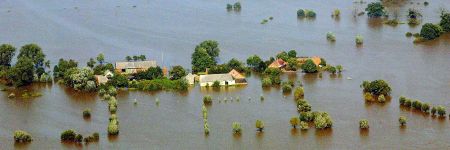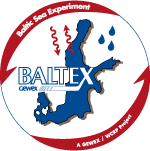| Research Objectives > Improved tools for water management

As climate changes, so does the amount of rainfall and river runoff. The hydrology of the Baltic Sea drainage basin, i.e. the water cycle, might be significantly altered. Extreme events like floods and droughts may be more frequent in future, and we need to be prepared. To help local administrations and decision makers in water management, BALTEX scientists contribute by modelling future runoff under various conditions.
The Baltic Sea basin is a region with a rather diverse availability of water. While in the west and northwest, water is plentiful and often used for energy production, the southern part of the drainage basin belongs to the driest parts of Europe. As far as we can say, this gap will increase in the future. The challenge for water management in the Baltic Sea basin in the next decades is to respond to climate change in a reasonable and sustainable way. Future impacts on water resources and risks caused by climate extremes need to be assessed, taking into account human activities like land use, river and lake regulations, levees, spillways, bridges and other infrastructure. A goal should be to provide tools (e.g. decision support software) and information for local decision makers.
Observation and modelling on different scales
The observation infrastructure in the Baltic Sea catchment basin has been dramatically improved over the last decades, also owing to BALTEX efforts. Still, more and better observations are needed for a better validation of models. Hydrological models are being developed which are able to simulate the water cycle (e.g. precipitation, evaporation or runoff) under various conditions. Basin-wide models as well as models of local river catchments are necessary which must be coupled to atmospheric and regional climate models to be able to account for changes and related impacts in the future. Furthermore, new observation techniques like radar-derived precipitation estimates need to be used to validate hydrological models.
Extreme events
Flood events as well as dry spells can have desastrous effects. The 1997 Odra flood and the 2003 dry spell have demonstrated the need to be prepared for such desasters, and we need to know if and where these events are likely to occur more frequently in the future. Especially the development and improvement of flood forcasting models is a primary goal.
|

